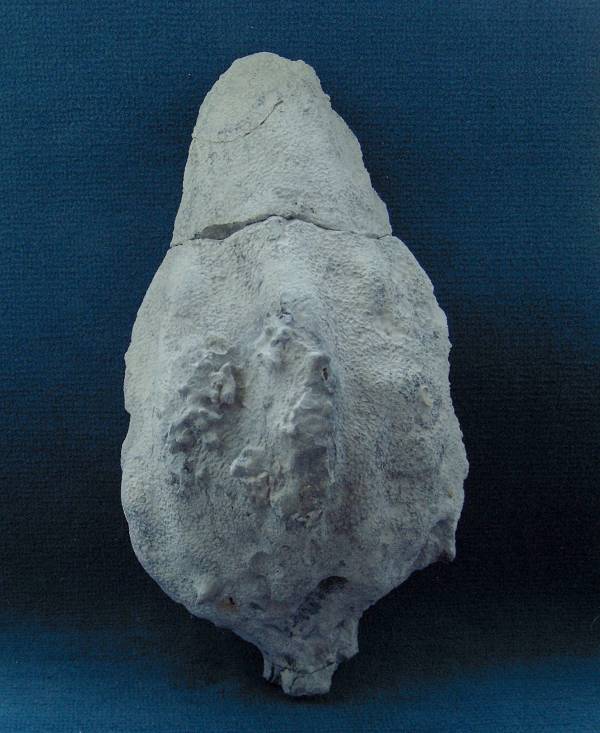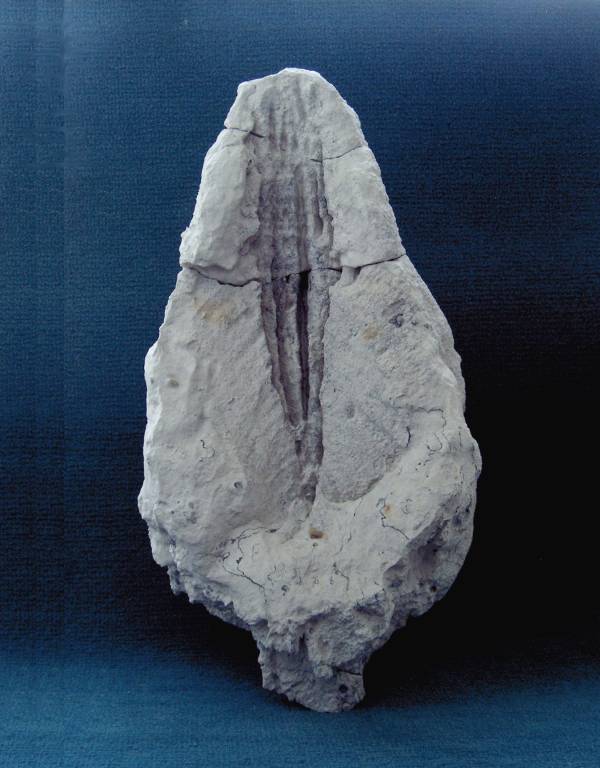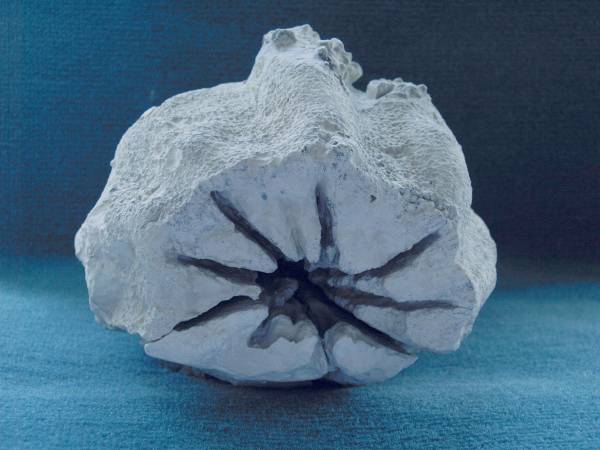


Hallirhoa sexplicata
Roemer 1864
Although Schrammen (1910) mentioned the rare occurrence of Hallirhoa fusiformis, Hallirhoa sexplicata has not been reported from Misburg before.
The present specimen of Hallirhoa sexplicata is large and spindle-shaped with pronounced longitudinal ribs. It has no stem, but several root processes at its base. The outer surface has a rough appearance, due to numerous large (1.5 to 2 mm) ostia with irregular outlines. Individual ostia are 1 to 2 mm apart.
The specimen was found broken into several pieces. Thus the next two pictures reveal some internal features of Hallirhoa sexplicata in longitudidal and cross sections.
The deeply incised longitudinal furrows of the paragaster wall, which correspond with the longitudinal folds on the dermal surface, are very striking. Opposite side walls of the furrows are subparallel and their surfaces are planar, but show a striation inclined at approximately 45 degrees.
The genus Hallirhoa is closely related to Siphonia, and some authors consider it a subgenus thereof. Strongly furrowed paragaster walls as shown by the present specimen are generally not mentioned in the literature. However, Griepenkerl (1889) writes that the paragaster walls are occupied by longitudinal rows of ostia (probably postica !) which may unite and form furrows towards the paragaster outlet of the sponge. He also states that the canalization changes with the age of the sponge and that the paragaster develops only in older individuals. - Since the present specimen is very large and probably quite senior, the deeply furrowed paragaster walls do not contradict a designation as Hallirhoa sexplicata.

The picture to the left is taken from Griepenkerl (1889) and shows a more juvenile example of "Siphonia sexplicata".
Notice that there is essentially no paragaster developed, but a central bundle of tubular canals instead, which exit in a shallow depression near the top.